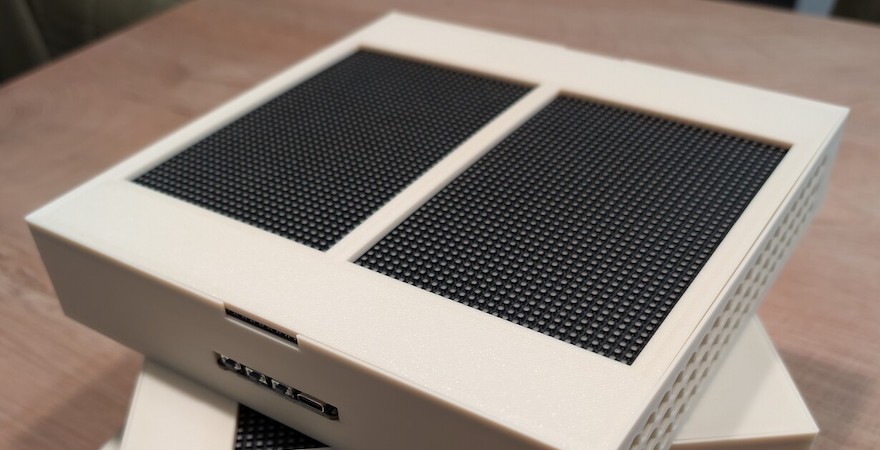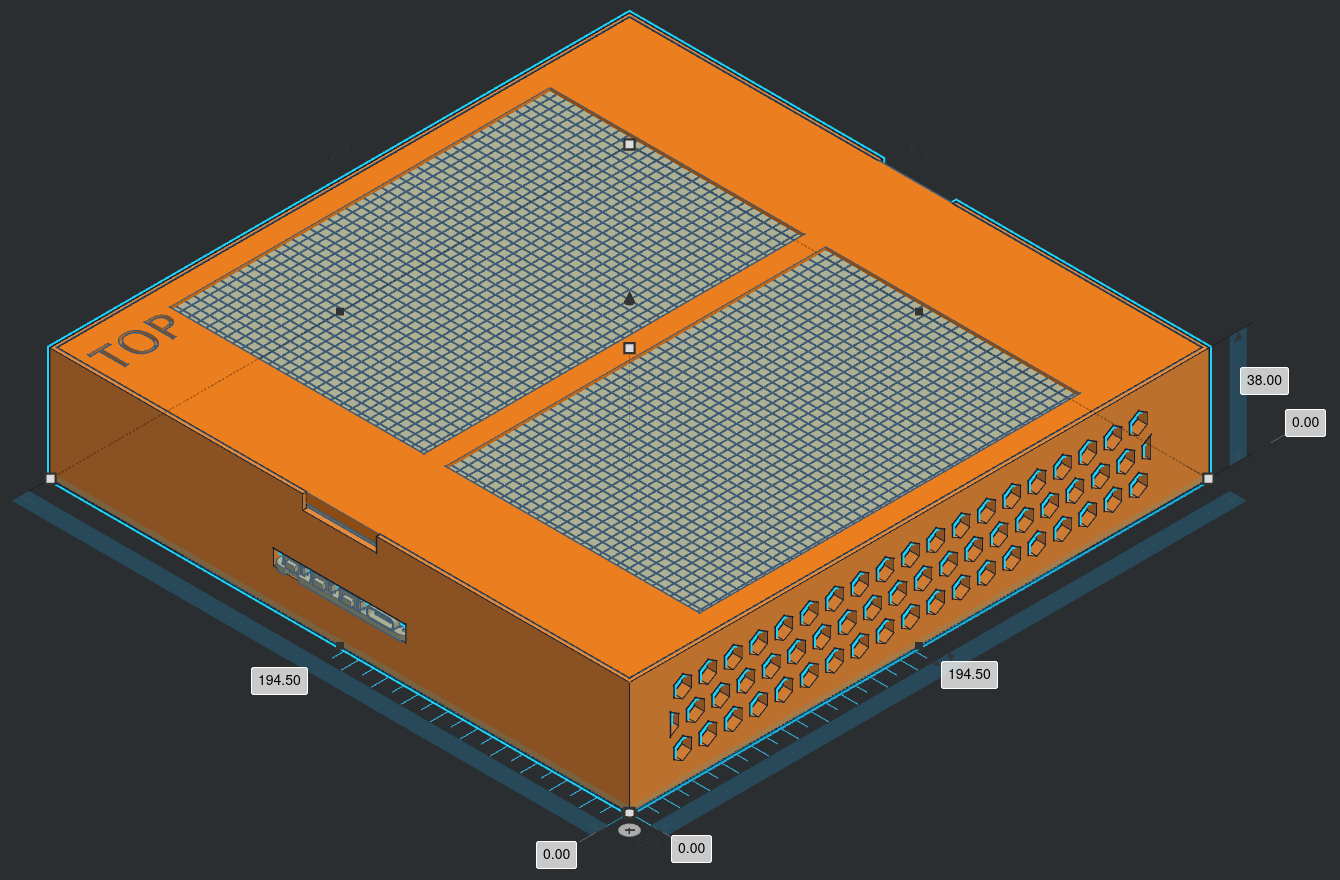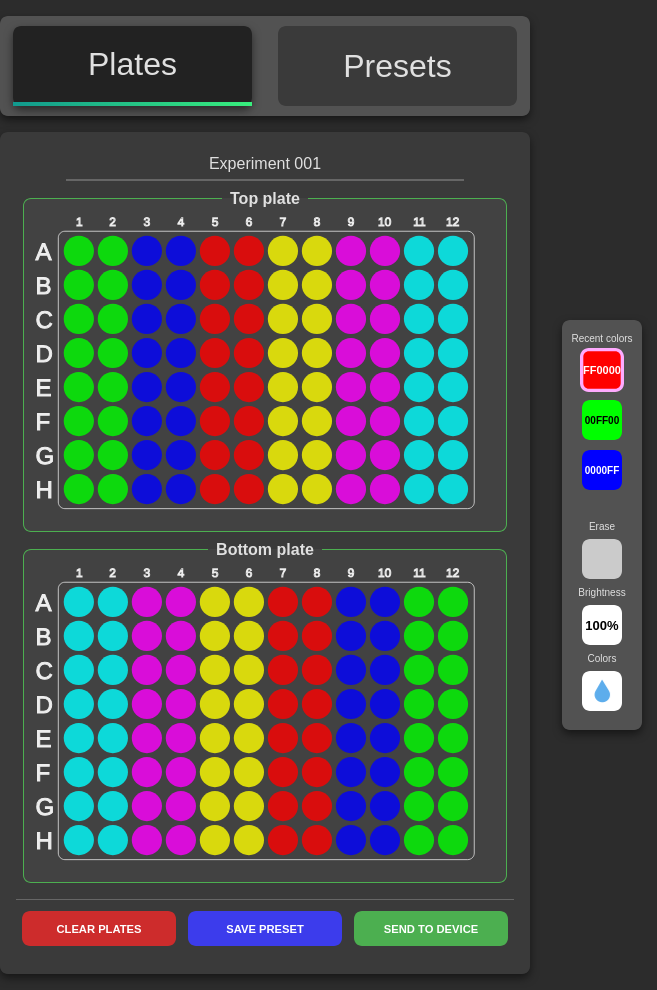
Introducing BLOOM, the Bacterial Light OptOgenetic Matrix
04 April 2025
One of the elements that characterize the MI-DNA DISC project is the possibility of creating competent bacteria that, at different light wavelengths, can maintain or release the oligos identified for DNA synthesis.
In this regard, the consortium needed to create a prototype of a LED controlled well plate capable of precisely stimulating competent bacteria. The request was addressed to the MI-DNA DISC partner Eko Refugium, who was asked to design and develop a stand-alone device that would use specific light wavelengths to optogenetically stimulate bacteria in 96-well microplates. The device had to be scalable and able to function in a laboratory without a computer present or connecting to existing WiFi networks for security compliance.
Eko Refugium, while researching available options, found several suitable projects such as LITOS and MAPLE and that could be used as reference. Both projects were successful in using standard LEDs with 96-well microplates. The problem was that they were both solutions that used custom PCBs. Due to supply chain issues and the need for rapid prototyping, the team looked for something that would run on off-the-shelf components that are readily available and have a low cost. In a complete stroke of luck, around that time experimental support for HUB75 LED matrix panels (the same type used in LITOS) was added to the popular open source WLED-MM project.
WLED is a popular project in the DIY/tinkerer community used to control LED lighting: it runs on many boards and has a JSON API, making it ideal for the purpose of rapid iteration, and matching most of the initial requirements. Adafruit MatrixPortal S3 was chosen as the board, as it was designed for HUB75 displays and is completely plug-and-play, requiring just a single USB-C cable for power. A larger 64×64 matrix was used to fit two full microplates. One of the benefits of using HUB75 displays is the ability to daisy-chain them, as each display has an input and output: these are known better for being used on large LED billboards found in many cities. Each of the wells has a square of 4 LEDs illuminating it, thanks to the 3mm pitch (distance between the centers of two adjacent LEDs).

The only two parts that were missing were a web interface to control the microplates and a case. The web interface was developed as a simple HTML page with JavaScript, allowing users to individually set colors for each of the wells, save/load presets and import external presets from JSON. The case was custom designed in Tinkercad, has a mounting mask for two microplates and was 3D printed on a Bambu Lab X1C using Extrudr GreenTEC Pro filament, using ~215g in total.
BLOOM is configured to look for a predefined hotspot WiFi called “bloom” that can run on the phone/tablet used to control the device, avoiding the need to connect it to existing networks. When all 192 wells are at 100% brightness the entire device uses ~3W of power as only 768/4096 LEDs are turned on. The cost of the device amounted for about €60, excluding the costs to 3D print the case.

Finally, BLOOM was ready to be tested in AIT’s laboratories for its intended use as a device for precise spatial and temporal control of bacterial gene expression. More specifically, this should allow light-control of specific key molecular mechanisms important for in vivo DNA data storage. Beyond that, broad scale effects of stimuli on regulatory networks can be explored which opens the way to new applications for which BLOOM is ideal.
Furthermore, light dynamic responses don’t only occur on the level of gene expression, but on a molecular level as well. Many biological processes, especially in the microbial kingdom are sensitive to or dependent on light. Hereby, not only the bacterial community but also the characteristic environment is crucial, therefore of special interest. For that purpose, having access to a tool that can simulate different environmental light conditions (intensity, exposure time, wavelength) is necessary for successfully studying and controlling the mechanisms of environmental DNA transfer. Ultimately, there are many more of unexplored mechanisms to study that can benefit from our programmable light matrix BLOOM.





